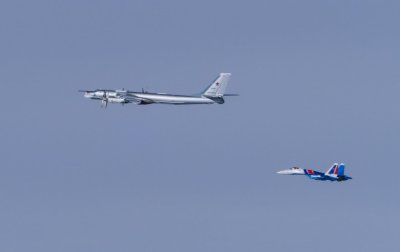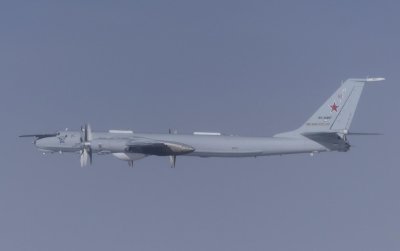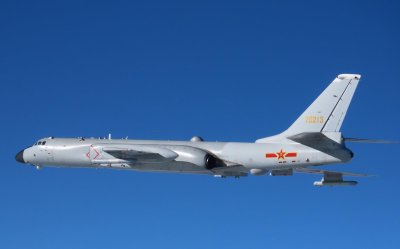Japan scrambled its air force jets nearly 700 times in the past 12 months in response to suspected airspace violations by mostly Russian and Chinese military aircraft, its Defense Ministry said last month.
A Newsweek map, using the Japanese government's geospatial data, illustrates the approximate flight paths of dozens of notable sorties, which were logged and reported in the fiscal year 2023—March 31 to April 1—by the Joint Staff of Japan's Self-Defense Forces. It shows Japan's archipelagic territory was regularly probed from at least three sides by Chinese and Russian aircraft.
Tokyo said its Air Self-Defense Force interceptors were launched 669 times over that period, a year-on-year decease of 109, but nonetheless a relative high compared with a decade earlier. Monthly figures, meanwhile, showed Japanese jets were scrambled 70 times in March, up from 21 times the month before.
Japan shares maritime borders—and territorial disputes—with potential adversaries Russia, China and North Korea. The longtime U.S. ally, which American leaders are treaty-bound to defend from an armed attack, is aligned more closely with Washington than at any time in recent decades.
North Korea's Kim Jong Un presents Japan with an unpredictable leader who has not hesitated to continue banned ballistic missile tests near or over Japanese territory. In Vladimir Putin and Xi Jinping, Tokyo's defense planners face a powerful strategic alignment that could have far-reaching consequences for Japanese national security.




The Chinese and Russian defense ministries did not respond to multiple written requests for comment before publication.
Japan's Joint Staff statistics showed nearly 70 percent of its scrambles were ordered from bases responsible for the country's southwestern airspace. The pattern—also visible on Newsweek's graphic—appears to reflect the increasing frequency with which Chinese forces were flying long-range sorties through the so-called first island chain into the Western Pacific.


The available 12-month data shows Chinese air force H-6 bombers and navy maritime reconnaissance aircraft and drones in the strategic airspace between the East China Sea and the Philippine Sea every month. And in the Sea of Japan, which both Koreas call the East Sea, Japanese forces have encountered Russian air force Tu-95 strategic bombers and Il-20 intelligence-gathering aircraft.

The Japanese Defense Ministry said it launched fighter jets 479 times against Chinese aircraft, down by 96, and 174 times against Russian aircraft, up by 24. Russian and Chinese bombers flew patrols together near Japanese airspace in June and in December, according to the database.
Tokyo said it was also monitoring the more frequent appearances of Chinese unmanned aerial vehicles—first seen off its southwestern islands in 2022—following the first publicly recorded flight of a WZ-7 reconnaissance drone in the Sea of Japan in March.
Uncommon Knowledge
Newsweek is committed to challenging conventional wisdom and finding connections in the search for common ground.
Newsweek is committed to challenging conventional wisdom and finding connections in the search for common ground.
About the writer
John Feng is Newsweek's contributing editor for Asia based in Taichung, Taiwan. His focus is on East Asian politics. He ... Read more
To read how Newsweek uses AI as a newsroom tool, Click here.








